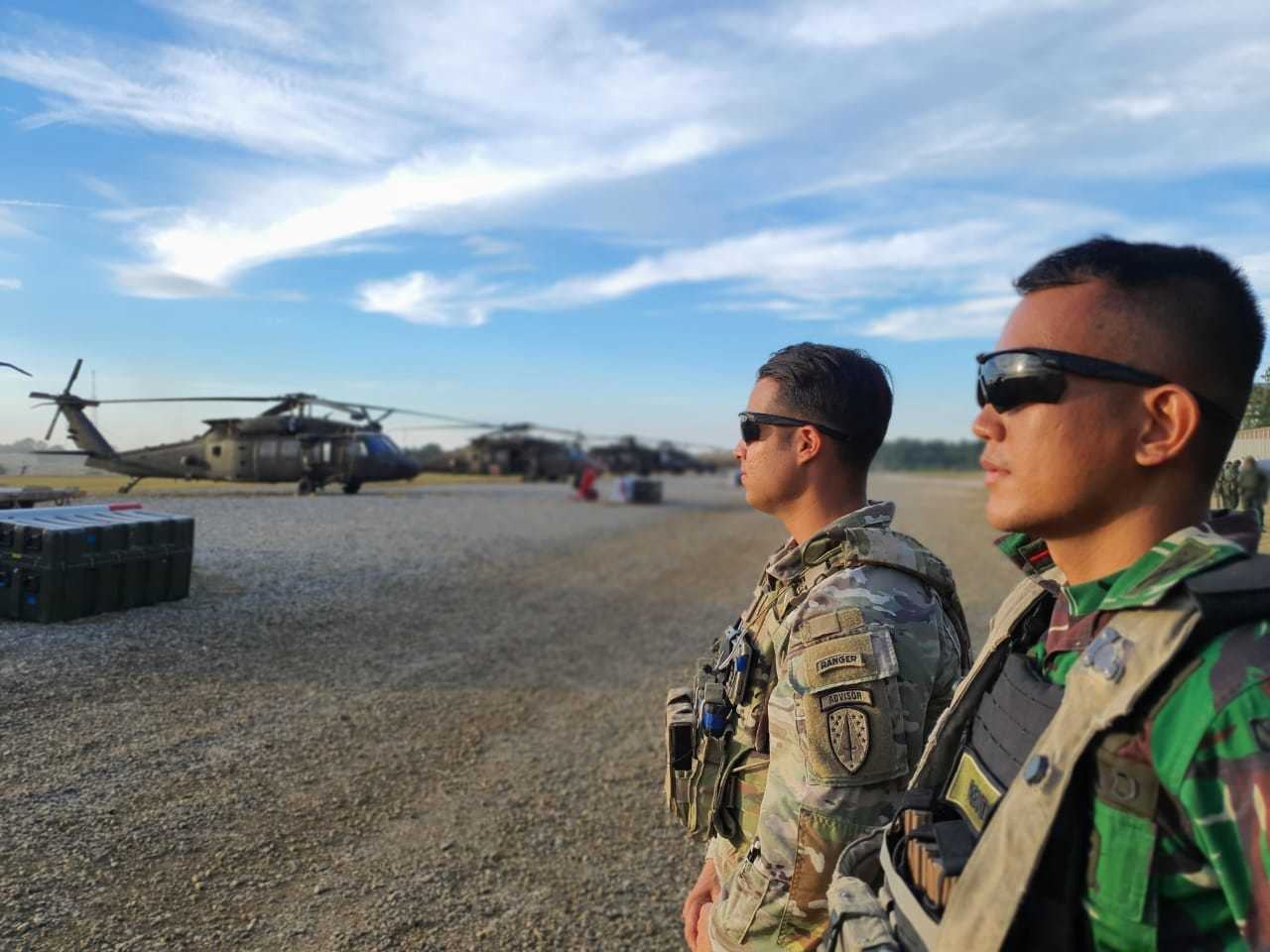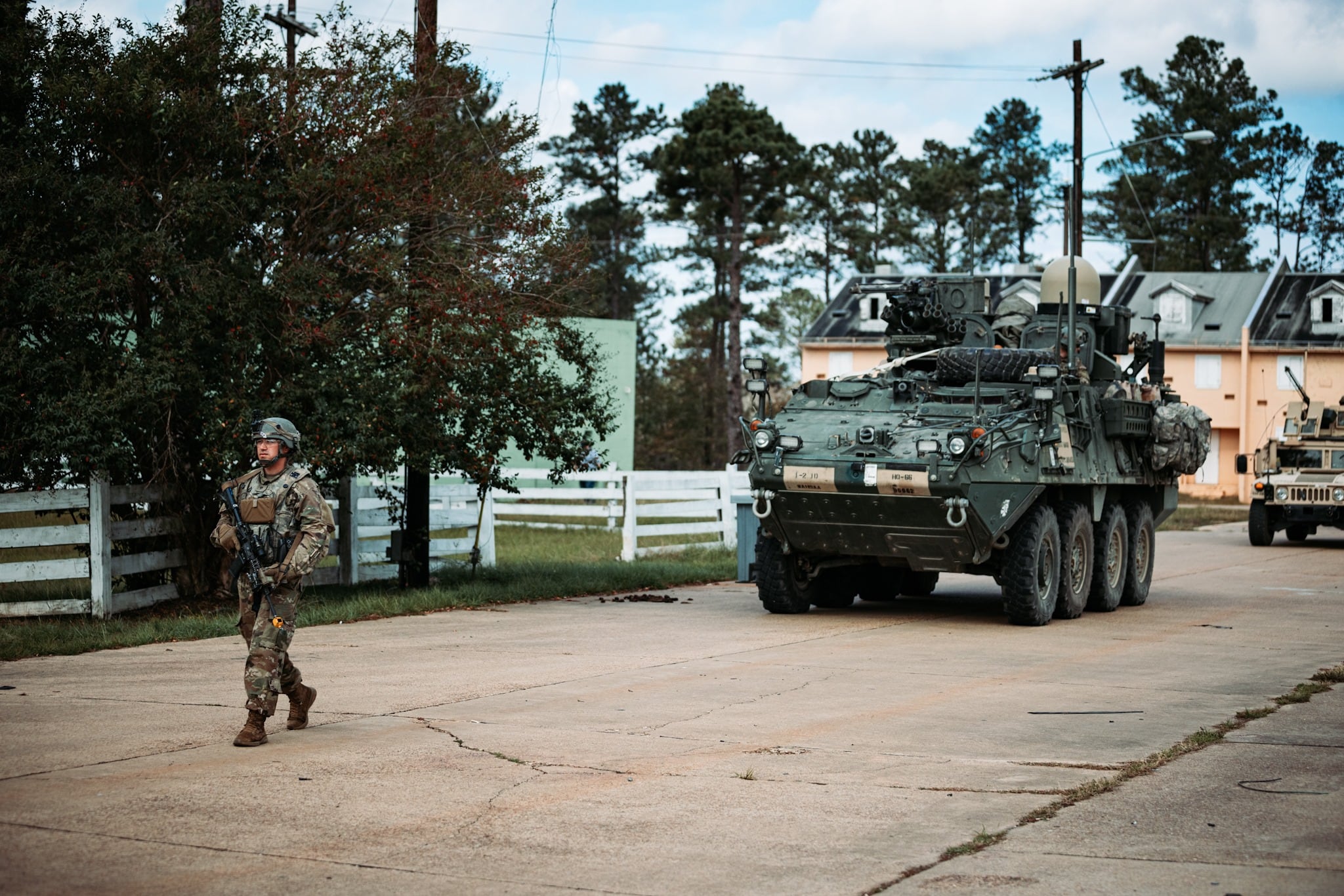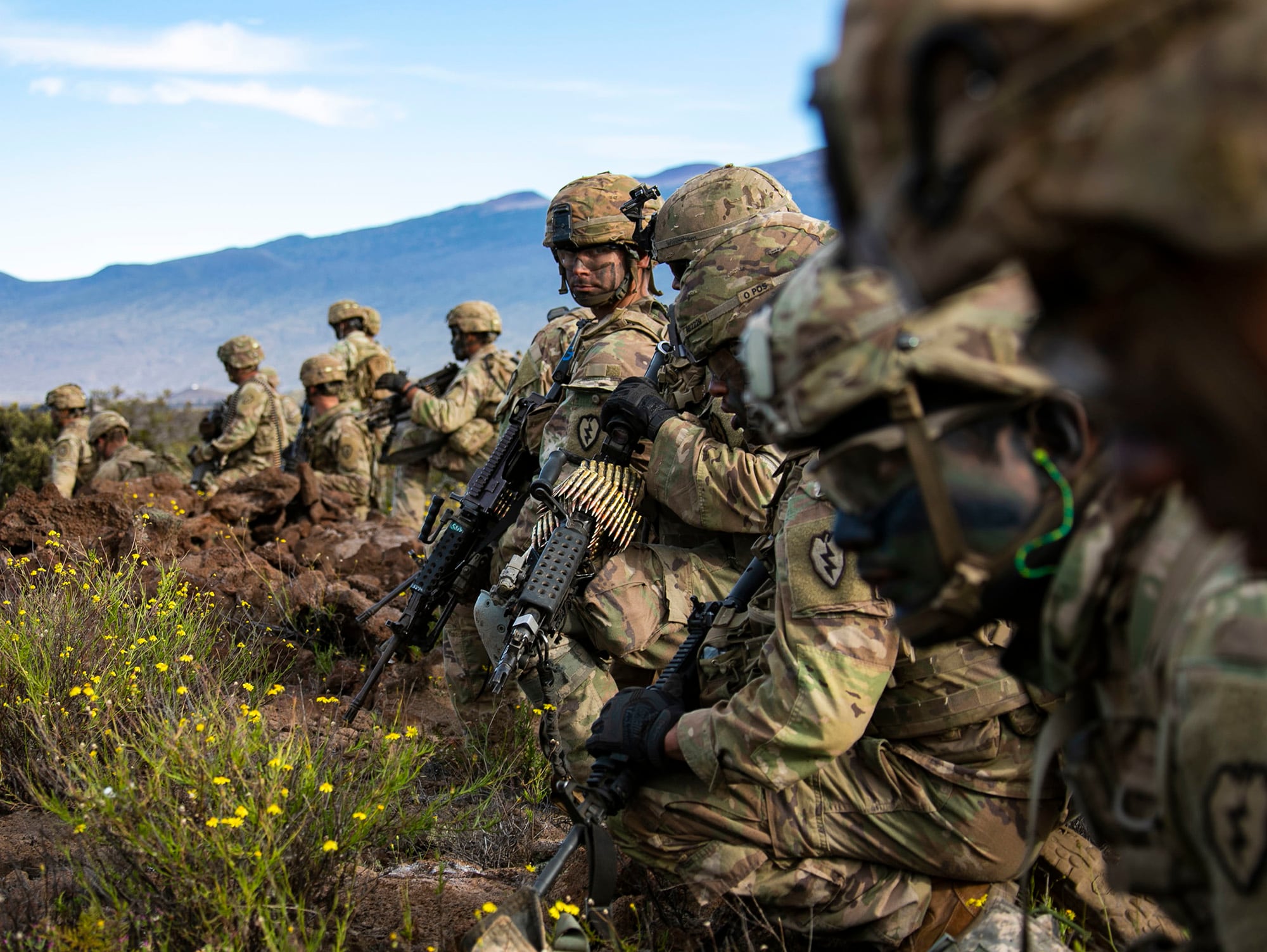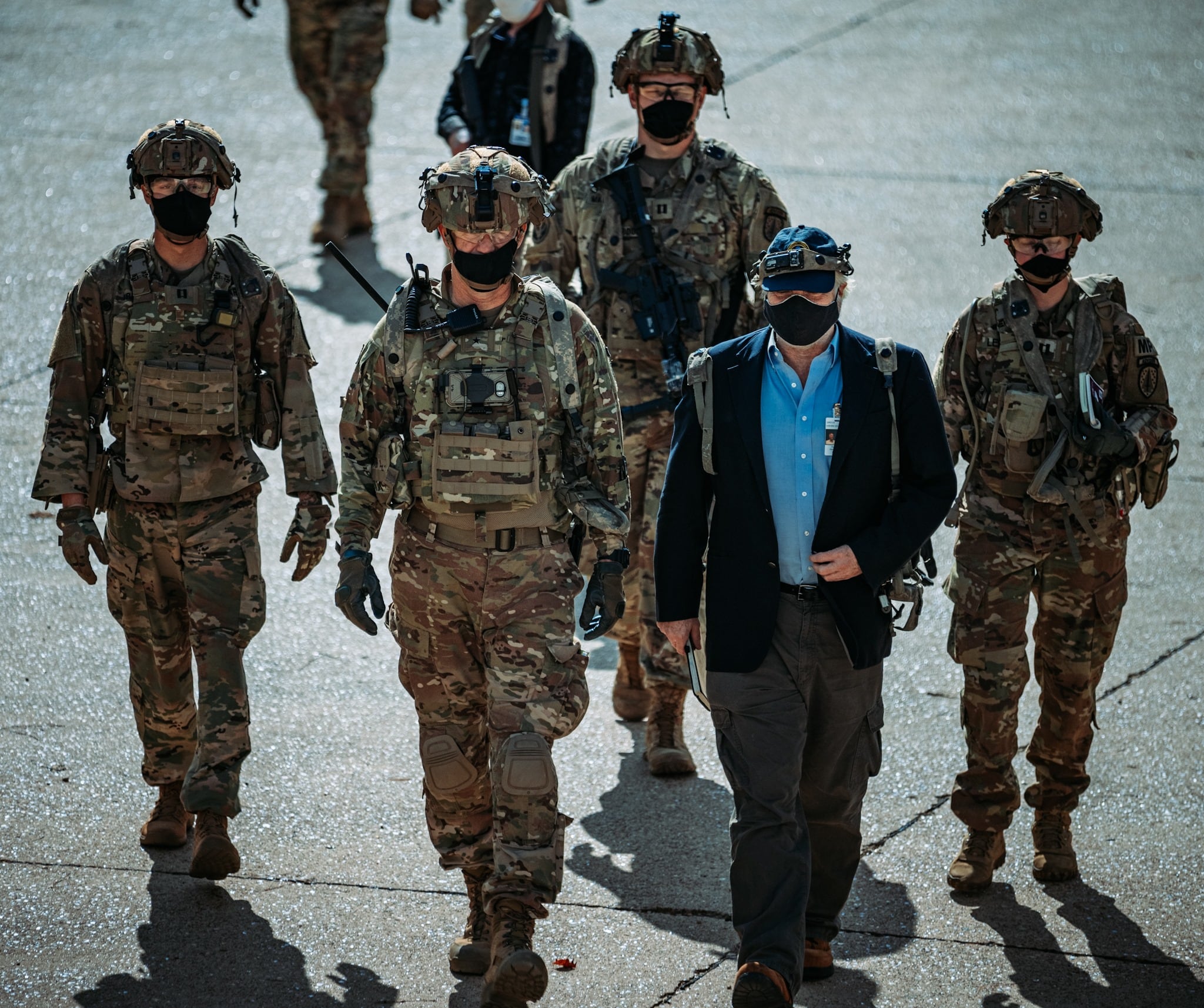U.S. soldiers from 5th Security Force Assistance Brigade are right now running through an exercise in Louisiana designed around defending a notional Pacific island from an invasion by a conventional military force, according to unit officials.
The exercise is a departure from previous SFAB trips to Fort Polk’s Joint Readiness Training Center, which focused on replicating the counter-insurgency mission advisers would see in Afghanistan.
The Washington-based 5th SFAB is slated to begin sending advising teams out to the Indo-Pacific region in the coming months, and its current rotation to JRTC hints at how military planners envision a U.S. role during crises in the theater.
The exercise places U.S. soldiers as advisers in a fictional country called “Torbia,” which is divided between north and south.
At the start of the exercise, Americans and their local partners were combating a low-level insurgency. But soon, North Torbia will launch an incursion across the border “in a true decisive action fight,” according to 5th SFAB commander Brig. Gen. Curtis Taylor.
The training event shows how SFAB advising isn’t just for foreign militaries struggling to develop a baseline fighting force, Taylor explained during a telephone call Wednesday.
“We’ve found that we’ve got an awful lot to offer very capable militaries on interoperability and integration of warfighting functions, like artillery and engineers, that have been core competencies of the U.S. military,” Taylor said.
RELATED

During the exercise, SFAB advisers will help the South Torbians leverage air support and artillery fire, as well as other assets like small drones that can aid in mission planning and situational awareness, according to unit photographs. Advisers have also been working to funnel the enemy.
“I’ve got all my teams out teaching guys how to place obstacles to stop the enemy from using small goat trails to bypass our engagement areas,” Taylor added.
About 2,300 soldiers from a 7th Infantry Division Stryker brigade are providing a notional partner force that roughly 600 advisers from 5th SFAB must assist throughout six days of conventional warfare. An aviation battalion is also providing support.

In the real world, the 5th SFAB has already sent an exploratory team out to Thailand, but regular deployments of advisers to the Indo-Pacific won’t start until next year.
In July, some of the 5th SFAB personnel also participated in an exercise in Hawaii between the 25th Infantry Division and the Royal Thai Army.
Both countries’ soldiers worked together through “a very similar scenario” to the one underway at JRTC, said Capt. Matt Brown, a 5th SFAB adviser who participated in the Hawaii exercise.
“The ‘Aha moment’ for me was how we can provide a critical linkage between the Royal Thai Army and, in this case, the 2nd Brigade, 25th Infantry Division, and form that interoperability so we could be a collective team,” Brown added.
Under a new force-generation model introduced this fall, Army leaders anticipate regionally aligning even non-SFAB soldiers to specific parts of the world. Doing so will help units pre-position the right weapons and materiel, as well as hone specific capabilities to regions they’re most likely to deploy to during a crisis.
In such a scenario, having advisers capable of providing the bridge between U.S. and local forces could be of some use.

Outside of such crises, Army advisers are still in demand among partner nations, according to SFAB officials.
How to establish logistical networks, call in artillery or air support, improve intelligence collection and even develop higher quality noncommissioned officers are among the tasks that SFAB advisers can expect to train foreign militaries.
“Our teams are very NCO-heavy, led by capable officers, but our partners come back just totally overwhelmed and amazed at what our NCOs are capable of talking about and teaching,” said Taylor. “So they want to emulate that in their NCO academies.”
RELATED

SFAB leaders have previously acknowledged that in a place like Southeast Asia, countries may want to partner with both U.S. and Chinese military trainers.
However, that doesn’t stoke fears that U.S. military techniques and tactics could be shared with Chinese personnel, SFAB officials said. U.S. advisers’ should be building out a partner forces’ capabilities — not simply replicating American ones.
“The number one sin an adviser can commit is to try to template our way of doing things on top of a foreign partner, and that’s something we teach from the day they arrive at our initial adviser training,” said Taylor. “You’re not helping them by taking the American processes and insisting that they do it our way. So, that minimizes the risk.”
“What we want our partner to see is the way we operate, the way we empower junior leaders, the way we invest in our noncommissioned officer corps,” Taylor added. “And if they want to share that with the Chinese, great. If they want to share that with other actors they have relationships with, that’s not something we’re terribly concerned with.”
Correction: An earlier version of this article incorrectly referred to the notional partner force as a Stryker brigade from 2nd Infantry Division. In reality, the soldiers were from 7th Infantry Division. The article has been updated.
Kyle Rempfer was an editor and reporter who has covered combat operations, criminal cases, foreign military assistance and training accidents. Before entering journalism, Kyle served in U.S. Air Force Special Tactics and deployed in 2014 to Paktika Province, Afghanistan, and Baghdad, Iraq.





